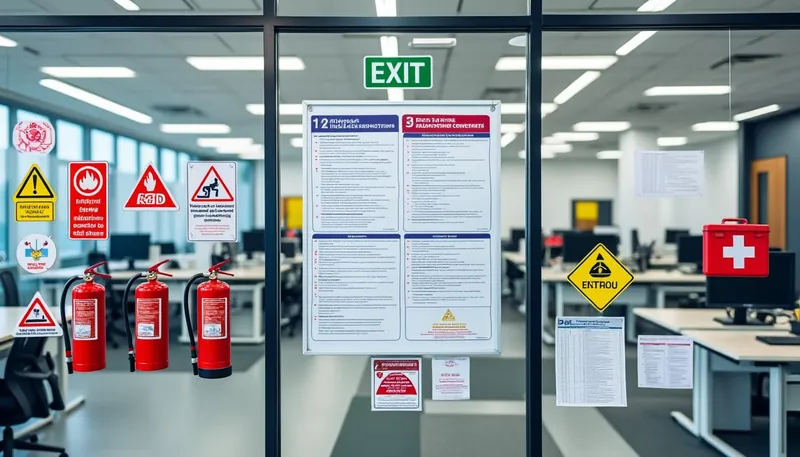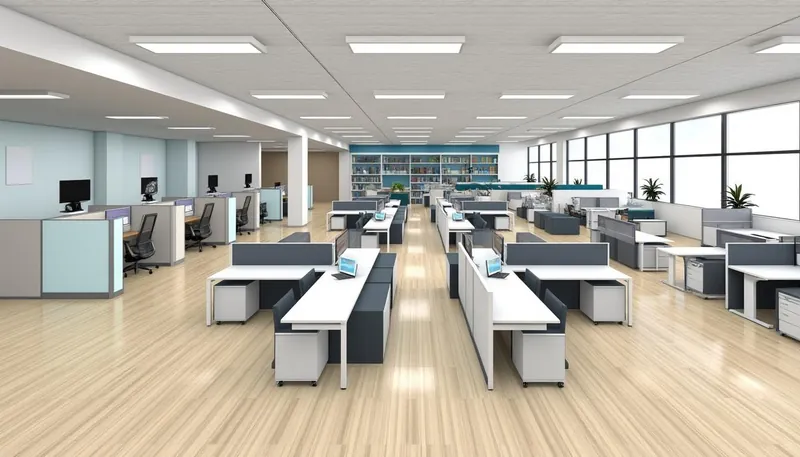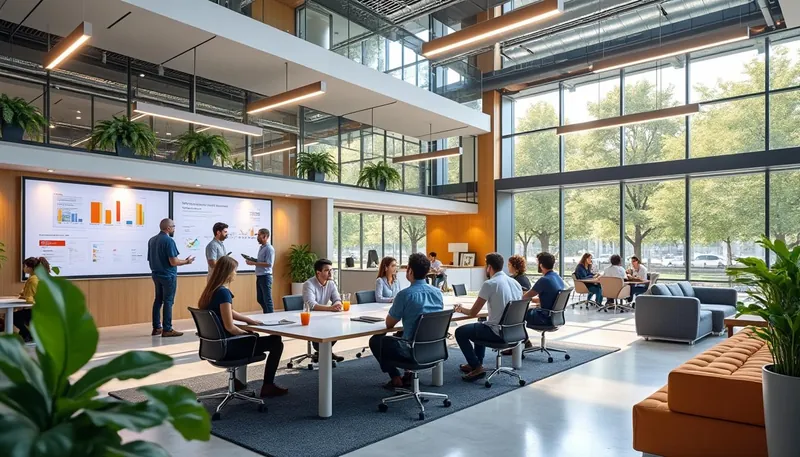Finding the right office space for your team is a major balancing act between legal compliance, employee comfort, and operational efficiency. As companies navigate the evolving landscape of workplace setups due to trends like hybrid working and remote employment, understanding the regulatory requirements in the UK becomes essential. It’s not just about fitting everyone in but ensuring there’s sufficient room to breathe and thrive. The aim is to create a workplace where productivity and well-being coexist harmoniously, aided by compliance with pertinent regulations like the Workplace (Health, Safety and Welfare) Regulations 1992 and guidelines issued by entities like the British Council for Offices (BCO). This article dives into the nitty-gritty details of office space requirements, helping employers stay on the right side of the law while maximizing employee satisfaction and performance.
In brief:
- 🏢 Allocate a minimum of 11 cubic meters of space per employee in accordance with UK regulations.
- 📏 For open-plan offices, a range of 8–12 m² (≈ 80–130 ft²) per employee is recommended.
- 🛠️ Including common areas such as meeting rooms adds 30-50% more space.
- 📈 Tracking occupancy and utilization rates can prevent waste in sprawling spaces.
- ⚖️ Ensure flexible solutions to accommodate changes in working habits and team sizes.
Understanding UK Workspace Regulations: The Legal Framework
The legal landscape regarding workspace requirements in the UK is primarily outlined under the Workplace (Health, Safety, and Welfare) Regulations 1992. According to these regulations, every employee must have adequate space while working to avoid overcrowding and ensure a comfortable working environment. Specifically, the regulations highlight that every person working must have a minimum of 11 cubic meters of space.
While that might sound quite ample, many employers misunderstand how to translate cubic meters into usable floor space. Let’s break it down:
- For a room measuring 5m x 4m x 2.5m high, the total volume is 50 m³.
- If 4 employees are using this space, each gets roughly 12.5 m³, exceeding the minimum required.
However, if the same space is crammed with 10 employees, the allocation falls to a meager 5 m³ per person, which breaches the regulations. That’s the first and foremost takeaway—proper planning is key.
But let’s look even deeper. The guidelines also recommend additional metrics to consider:
- 🔹 Room dimensions: Height, width, and length matter. Rooms should not just be high but spacious.
- 🔹 Access routes: Everyone needs easy access to and from workstations. If your office is cluttered with furniture, you could violate safety regulations.
Failing to comply with these regulations not only puts the well-being of employees at risk but can also have serious legal repercussions. Thus, understanding space requirements isn’t just about convenience—it’s fundamental to the operational health of your business.

How to Calculate Office Space Per Employee
Finding the right office layout isn’t a one-size-fits-all scenario. It involves understanding not only the legal requirements but also how your team functions. Following a systematic approach will help you determine the best space allocation. Here’s a simple step-by-step strategy:
- Assess Basic Space Requirements: For open-plan environments, aim for about 10 m² (≈ 100 ft²) per employee. This figure includes personal desk space as well as circulation areas like pathways.
- Include Common Areas: Don’t forget to add approximately 30-50% more space for areas like meeting rooms, break rooms, and informal lounges. If your total employee workspace is 500 m², you should plan for 150-250 m² for communal areas.
- Factor in Future Growth: A good rule of thumb is to set aside about 10-20% of the total square footage to accommodate potential team expansion without disruption.
To bring this into perspective, imagine you’re planning for a team of 50 employees. Here’s how the calculations break down:
| Calculation Step | Details | Space Required (m²) |
|---|---|---|
| Basic Space Requirement | 50 employees x 10 m² | 500 m² |
| Common Areas Allocation (40%) | 500 m² x 40% | 200 m² |
| Total Space Requirement | 500 m² + 200 m² | 700 m² |
This example illustrates why it’s crucial to consider the overall layout and future needs when planning your office space. Remember that taking the time to calculate accurately today will save you from costly adjustments later on.

Measuring Occupancy and Utilisation Rates for Efficient Space Management
Maintaining optimal occupancy and utilisation rates can make all the difference between an efficient workspace and one that feels disorganized and crowded. But what do these terms actually mean? Simply put:
- 🔹 Occupancy Rate: This refers to the number of occupied spaces compared to the total number of available spaces, measured as a percentage. Knowing this statistic is vital for understanding if your space is being effectively used.
- 🔹 Utilisation Rate: This measures how often workstations are being used compared to how many are available. If there’s a 70% usage for desks over a week, then you’re likely on the right track. Investigating why that number isn’t higher may provide insights into your team’s work habits.
In a hybrid setup, the discrepancies in occupancy can become apparent, making it all the more relevant to monitor these rates. Consider a scenario where your office has 100 desks but only 70 employees are utilizing them regularly. Here, an occupancy rate of 70% could indicate the need for a more flexible desk-sharing policy.
Furthermore, regular tracking helps identify trends that inform strategic decisions. If meeting rooms are hardly occupied, you might want to repurpose that space into collaboration zones that cater to your team’s preferences. That kind of flexibility is crucial in 2025.
| Metric | Definition | Example Calculation |
|---|---|---|
| Occupancy Rate | Percentage of occupied spaces | (Occupied Desks / Total Desks) x 100% |
| Utilisation Rate | Frequency of use of workstations | (Average Employees Working / Total Workstations) x 100% |
In summary, tracking these rates not only bolsters compliance with workplace regulations but empowers you to create a more engaged and effective workforce.
The Role of Flexibility in Modern Office Design
With the rise of hybrid and remote work schedules, flexibility has become a buzzword in office planning. To thrive in this evolving landscape, employers need to adopt flexible office solutions that can adapt to changing team sizes and workflows. Think of your workspace as a tool that enables productivity.
One of the best strategies is to integrate desk sharing policies. This can significantly reduce the need for assigned desks and allows employees to claim a workspace as needed. It’s a practical solution that maximizes available space and encourages collaboration within teams. Here’s a quick checklist to implement:
- 🔸 Assign workstations dynamically through space management software.
- 🔸 Create zones for both individual focus and collaborative tasks.
- 🔸 Consider using adaptable furniture that can be reconfigured as per requirements.
- 🔸 Don’t forget about wellness zones—the future workspace is as much about relaxation as productivity!
Employing ergonomic office furniture plays a crucial role in improving the comfort of employees, impacting their productivity and overall health. For instance, if your employees report discomfort using desk chairs that cramp their style, an investment in ergonomically designed solutions will not only comply with health and safety legislation but also boost morale.
| Furniture Type | Importance | Examples |
|---|---|---|
| Ergonomic chairs | Supportive seating reduces strain and encourages proper posture | Adjustable height chairs, lumbar support chairs |
| Height-adjustable desks | Allow for both sitting and standing work styles | Electric sit-stand desks |
Overall, the impact of flexibility should not be understated as businesses increasingly recognize the need to adapt to the diverse needs of employees.
Frequently Asked Questions
What is the minimum space requirement per employee in the UK?
The minimum legal requirement is 11 cubic meters of space per employee.
How can I measure the occupancy rate of my office?
You can measure it by dividing the number of occupied desks by the total number of desks, then multiply by 100.
What furniture is considered ergonomic for office work?
Ergonomic furniture includes chairs that support good posture and desks that accommodate both sitting and standing positions.
How much space should I allocate for common areas?
Typically, allocate 30-50% of your total space for common areas like meeting rooms and lounges.
How flexible should my office space be?
Flexibility depends on your team’s work style; consider adjustable desks and hot-desking policies for better space management.


